NJ bird lovers can rejoice in knowing that wild birds have a safe haven to go to when they are hurt and injured.
The Raptor Trust (not named this until the 80’s) has been helping care for our feathered friends since 1968 when a man named Len Soucy took an interest in hawks and wanted to create a safe space for them.
The Raptor Trust’s mission is to provide care to wild birds, educate people about wild birds and birds of prey and to be a humane example for other organizations.
In 2020 the trust admitted 5,381 birds for care.
Some of these birds were actually pretty interesting too including a Brown Booby, a Louisiana Waterthrush and a White-winged Scoter.
Birds like these are usually transferred to other wildlife centers where they are more knowledgeable on these types of birds.
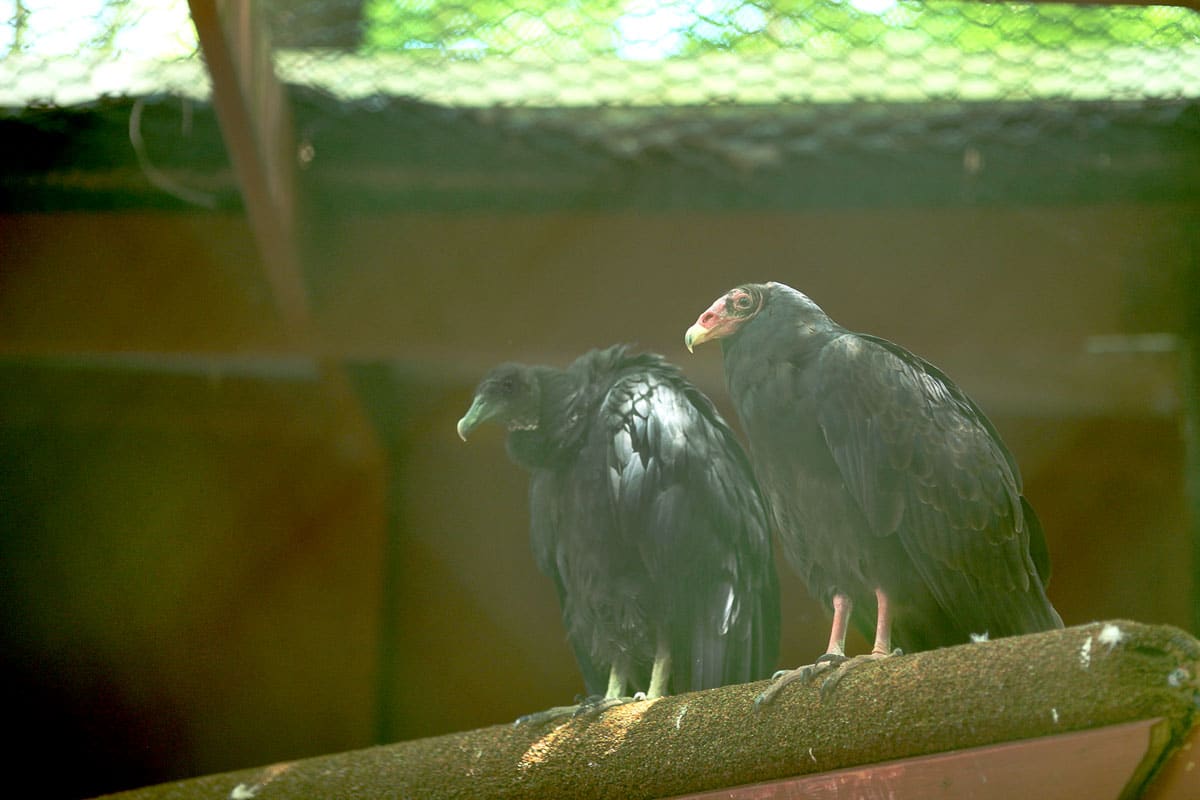
490 of the birds admitted were raptors and of those there were 19 different species.
Here is the list of raptor species that were admitted:
- Red-tailed Hawk
- Cooper’s Hawk
- American Kestrel
- Eastern Screech Owl
- Turkey Vulture
- Black Vulture
- Great Horned Owl
- Peregrine Falcon
- Broad Winged Hawk
- Osprey
- Red-shouldered Hawk
- Barred Owl
- Bald Eagle
- Merlin
- Northern Saw-whet Owl
- Short-eared Owl
- Sharp-shinned Hawk
- Barn Owl
- Long-eared Owl
Each of these raptors are assessed and then either treated and released back to the wild or sometimes transferred to other wildlife centers.
Others may remain at the trust for life if they feel they cannot survive in the wild.
My Visit
This was a visit of my own accord, meaning I was not asked to come or paid to come.
The girl was home from college and I am always looking for things for us to do.
The Raptor Trust seemed like a great day.
My daughter and I visited on a Thursday morning as soon as they opened.
It was a perfect time to go since we got to see the birds being fed breakfast.
It was super quiet too so we could really enjoy the peacefulness birds bring.
One of our favorite birds was a Raven who was pacing anxiously waiting for his grub to arrive.
Watching birds of prey eat was an amazing experience in itself.
One thing I was amazed by was the playfulness of the turkey vultures.
To me those are some gross birds, but to see them playing with a tube of cardboard, well that made me see them in a whole new way.
Most of the birds are able to be seen with a naked eye, but a pair of binoculars can definitely help see more details on some of the smaller birds that may be hidden in the corners of their hutches.
Below are just a few shots of The Raptor Trust.
Of course all the birds are safe and secure in large areas that are built with wood and wire, so these images are not the best since shooting through layers of wire is tough, but give you an idea of the variety of birds that are cared for there.


Was so excited to be able to see feeding time.
This was a last minute shot that I am so glad I got.
This hawk was truly enjoying his meal, this was actually the second mouse he ate.
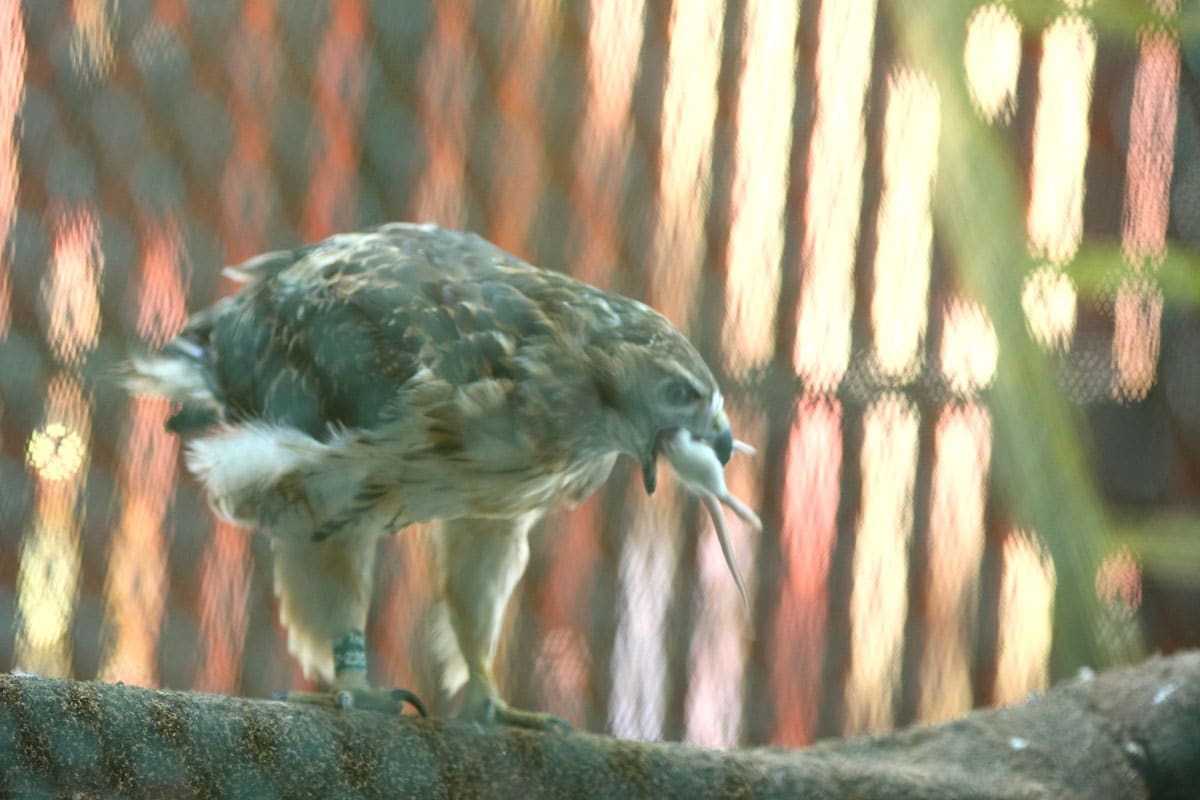
This guy was my favorite! His eyes sucked me right in.
He stayed way up in the corner of the hutch so he was hard to get, but you can clearly see the intensity of his stare and curiosity.
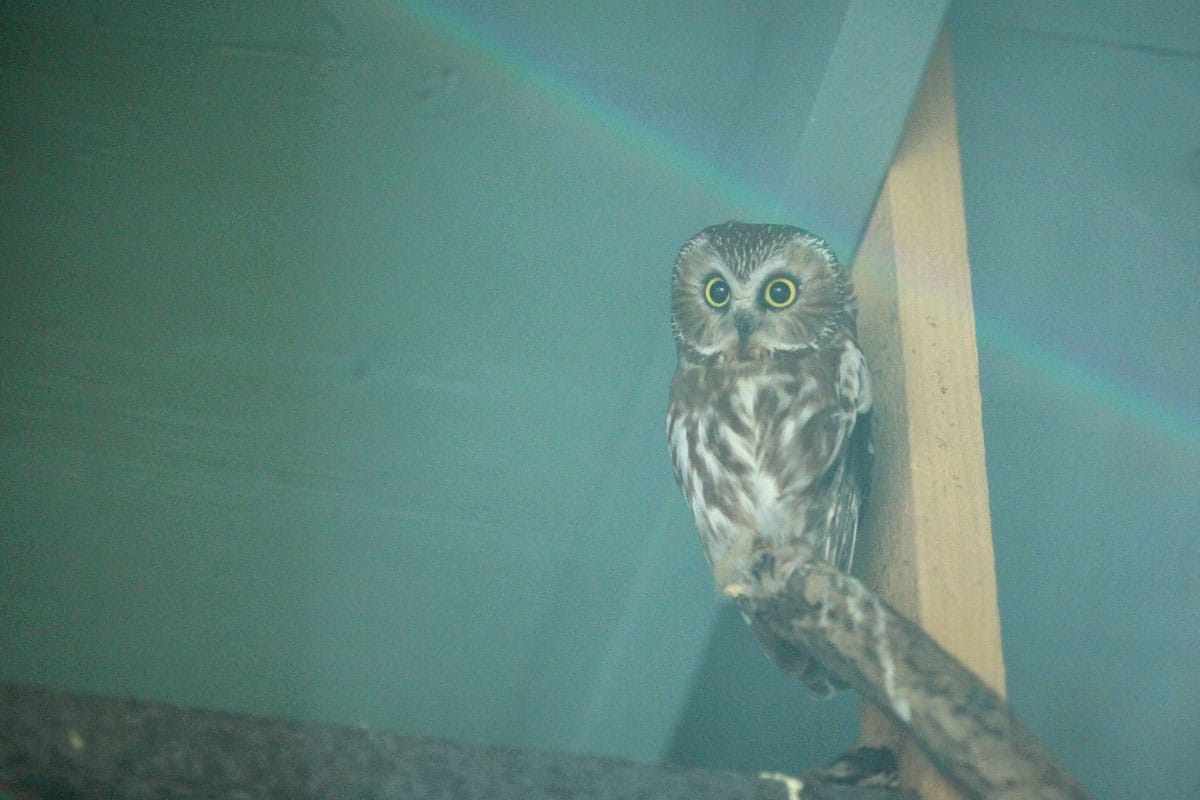
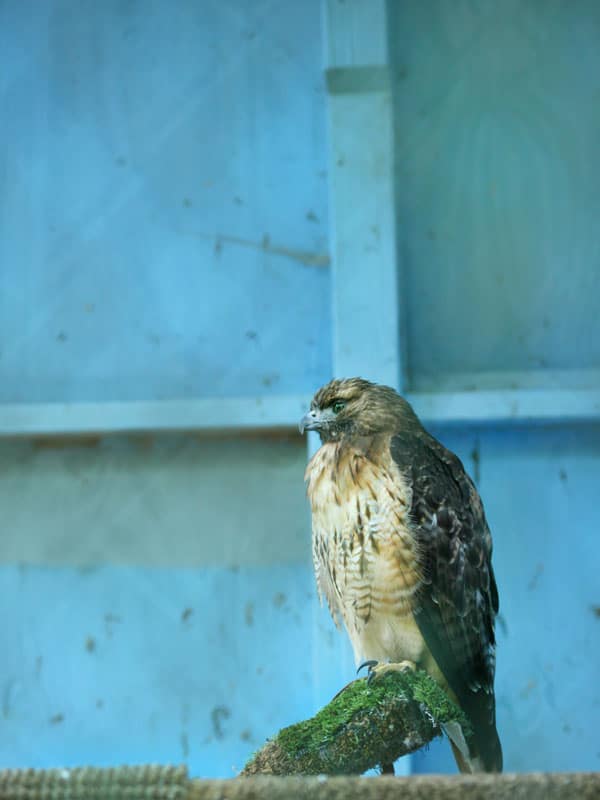
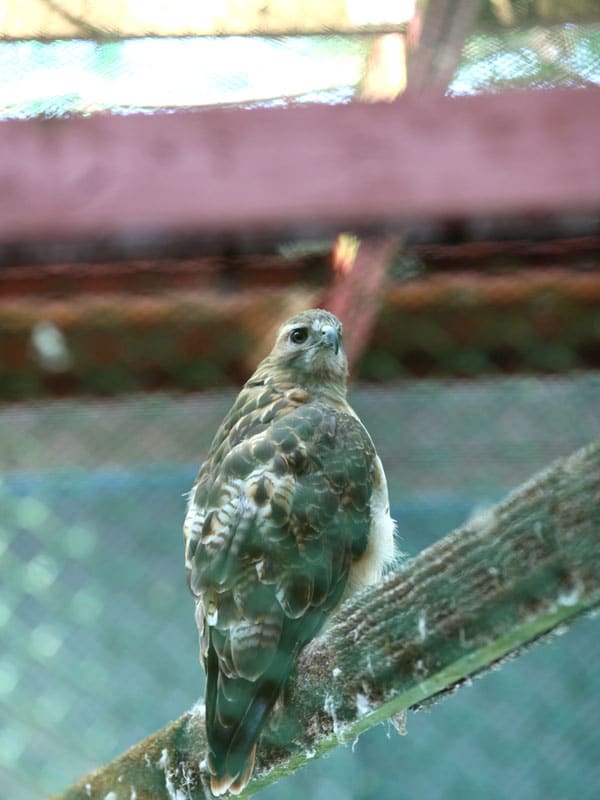
There were a couple of birds not in their cages that my daughter really wanted to see like the Kestrel, so we will be back before she heads back to college.
I also opted to purchase a t-shirt and magnet on the way out just to show some extra support.
If you are in the area – and love animals, it is 100% worth the trip!
Visiting Raptor Trust
My daughter and I spent 2 hours slowly walking through the trust.
We took our time and enjoyed watching them sleep, fly, play and just relax.
We read all the signs that were posted outside each birds enclosure so we can learn more about the type of birds that were there.
I also loved the dedication plaques around the trust.
It was inspiring to see all the amazing people who dedicated so much of their lives to helping and advocating for these amazing animals.
If you are just their to see the birds, you could probably get through the whole area in about a half hour or so.
The trust requires you stay on the path and they ask you remain quiet during your time there to not stress or disturb the birds.
Many owls reside there and do enjoy a nice snooze during the day so lots of noise is not beneficial to their natural habitats!
Please visit the website for hours and days they are open.
While the trust is free to visit, they do ask for donations and we do hope every visitor leaves a little something.
Even $2, which is their suggested donation, can make a big difference.
They also host several activities throughout the year for adults and kids, so be sure to check out their schedule of events on their website.
They are located at 1390 White Bridge Road in Millington, NJ.
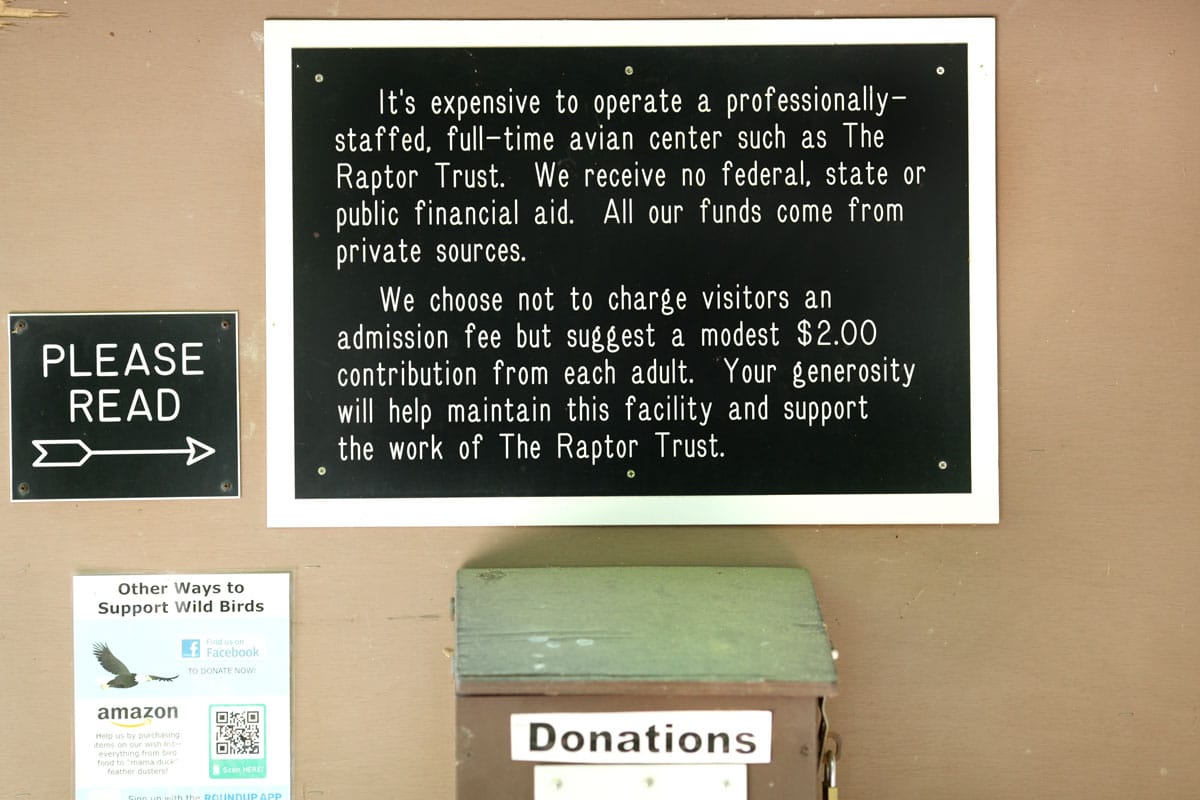
Support The Raptor Trust
Without support from the community, groups like the Raptor Trust could not continue on with the important work they do.
By keeping in touch with them on social and sharing their educational information you can help them gain more awareness, in turn helping them as well as these beautiful creatures.
Go ahead and visit them online, in-person or on social.
Watch the work they do and help them spread their mission and message.
Visit website: https://theraptortrust.org/
Follow on Facebook: https://www.facebook.com/theraptortrust/
Follow on Instagram: https://www.instagram.com/theraptortrust/
Watch on YouTube: https://www.youtube.com/channel/UCK9DdoorQSIBKBPDrnOGnfA/videos
The have several opportunities to donate includeing:
- Standard donations via mail, PayPal, Venmo, Facebook or Amazon Wish List
- Check with your employer about gift matching
- Monthly donations via the Raptor Pass program
- Tribute gifts to honor those you love
- Legacy gifts where you can leave money in your will or estate plan
All of these donation opportunities are put to good use as you can see in their annual reports.
A Case Study – Your Donations At Work
In their annual report for 2020, The Raptor Trust shared and example of what they do to help wild birds get back into the wild.
In November 2020 a Barred Owl found itself injured after it was hit by a car.
This is a threatened species of bird in NJ so it was important that it receive care and be rehabilitated.
A kind person found the bird on the side of a road with an injured wing and ultimately this little guy found his was to the Raptor Trust.
The bird was cared for with a vareity of treatments and was given enough time for the fracture to heal.
These treatments included X-rays, medicine, general care and constant medical team care to keep the birds muscle from atrophying while in the healing process.
Once she was ready she was moved to what they call a “flight cage” so the team could monitor her ability to fly and hunt.
Once she was ready she was release back to the wild.
Her stay with The Raptor Trust was from Nov 22, 2020 through Feb. 25, 2021 and the total cost for her care was $2,064.
That is the story of just one bird.
Imagine all the others that had more severe injuries.
You can see more of that they do on their Facebook page where they shared the story of this owl.

